


Herbs For Homemade Remedies

In our fast-paced world, the desire for natural and effective remedies is growing. Herbs, often referred to as nature's pharmacy, have been utilized for centuries to address a wide range of health concerns. In this article, we'll explore the world of herbs for homemade remedies, showcasing their versatility and potential to enhance well-being.
The Power Of Herbal Remedies
Herbal remedies have a long and storied history, with roots tracing back to ancient civilizations. Their enduring popularity is due to their effectiveness and minimal side effects compared to synthetic drugs. Herbs are rich in bioactive compounds, offering a natural alternative for common ailments.
Creating Your Herbal Toolkit
To get started with herbs for homemade remedies, it's essential to build a basic herbal toolkit. Here are some key herbs to consider:
1. Lavender: Known for its soothing properties, lavender can help alleviate stress, anxiety, and insomnia. It's often used in teas, essential oils, and as a topical treatment for burns and insect bites.
2. Echinacea: Echinacea is celebrated for its immune-boosting capabilities. It's commonly used to fend off or reduce the duration of colds and flu.
3. Aloe Vera: Aloe vera is renowned for its ability to heal skin ailments, from sunburn to minor cuts and wounds. Its gel is a go-to remedy for soothing and repairing damaged skin.
4. Chamomile: Chamomile is a gentle herb used to calm digestive issues and promote relaxation. It's often found in teas, but its essential oil can be used topically for various skin conditions.
5. Peppermint: Peppermint is a versatile herb known for aiding digestion and alleviating headaches. It can be used in teas, infused oils, or as a topical rub.
6. Calendula: Calendula is prized for its skin-healing properties and is a primary ingredient in salves, creams, and ointments for skin irritations and rashes.
7. Ginger: Ginger is a potent anti-nausea and anti-inflammatory herb. It's an excellent addition to teas or can be consumed in various forms for digestive relief.
8. Thyme: Thyme's antimicrobial and antibacterial properties make it a great remedy for respiratory issues. It's often used in homemade cough syrups and teas.
Crafting Homemade Remedies
Once you have your herbal toolkit, you can create a wide range of homemade remedies. Here are a few examples:
1. Herbal Teas: Infuse your herbs in hot water to create soothing and healing teas. For example, ginger tea for upset stomach or chamomile tea for better sleep.
2. Salves And Balms: Combine herbs with carrier oils and beeswax to create healing salves and balms for skin irritations and wounds.
3. Tinctures And Extracts: Create alcohol-based extracts by soaking herbs for an extended period. These can be used for various medicinal purposes, like immune support or pain relief.
4. Herbal Baths: Infuse your bathwater with herbs like lavender or Epsom salt for a soothing and relaxing soak.
Benefits Of Homemade Herbal Remedies
Natural And Safe: Homemade herbal remedies are free from harmful chemicals and synthetic additives, making them a safe and gentle option for many people.
Cost-Effective: Growing your herbs or purchasing them in bulk can be more cost-effective than buying commercial products.
Sustainability: Using homegrown or locally sourced herbs promotes sustainability and reduces your carbon footprint.
Customization: You can tailor your remedies to suit your unique needs and preferences.
Herbs for homemade remedies offer a holistic approach to health and well-being. They allow you to tap into the healing potential of nature while gaining a sense of self-sufficiency. Whether you're addressing common ailments or simply seeking natural ways to enhance your health, harnessing the power of herbs can be a gratifying and effective journey towards a more natural and holistic lifestyle. So, why not explore the world of herbal remedies and create your own arsenal of natural healing solutions? Your health and well-being will thank you for it.
A Global Celebration Of Brews
 Beer And Celebration: Beer has long been an integral part of celebrations and rituals across the world. In Germany, Oktoberfest is a cultural phenomenon that draws millions of visitors from around the globe. In Ireland, St. Patrick's Day is synonymous with toasts of Guinness and other Irish stouts. In the Czech Republic, beer is often enjoyed during traditional festivals and holidays. Such celebrations highlight the cultural significance of beer and its role in fostering community and camaraderie.
Beer And Celebration: Beer has long been an integral part of celebrations and rituals across the world. In Germany, Oktoberfest is a cultural phenomenon that draws millions of visitors from around the globe. In Ireland, St. Patrick's Day is synonymous with toasts of Guinness and other Irish stouts. In the Czech Republic, beer is often enjoyed during traditional festivals and holidays. Such celebrations highlight the cultural significance of beer and its role in fostering community and camaraderie.
Beer And Food Pairing: Beer culture diversity extends beyond the beverage itself to the world of gastronomy. Beer and food pairing is a practice celebrated in many cultures. The hearty brews of Germany are perfect companions to sausages and pretzels, while the delicate flavors of sushi and sashimi in Japan are enhanced by crisp lagers. In the United States, craft beer enthusiasts have elevated beer and food pairings to an art form, experimenting with intricate combinations that rival wine pairings in complexity and creativity.
Traditional Brewing Techniques: Many regions have preserved their traditional brewing techniques, passed down through generations. For example, the indigenous beer of Africa, known as "sorghum beer" or "umqombothi," is brewed using ancestral methods. Similarly, in South Korea, "makgeolli" continues to be made using time-honored techniques, showcasing the beauty of ancient brewing traditions.
The Craft Beer Revolution: The craft beer movement, particularly prominent in the United States, has sparked a wave of innovation that celebrates diversity in beer. Craft brewers embrace unconventional ingredients, styles, and experimental techniques.
The Fusion Of Tradition And Innovation
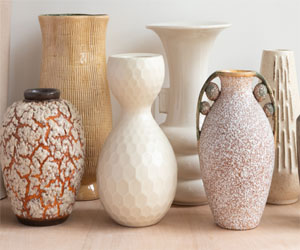 Ceramics, an art form with a history dating back millennia, has taken on new life in the contemporary art world. Contemporary ceramics represent a dynamic fusion of traditional techniques and innovative ideas, resulting in a breathtaking array of artistic expressions. This revitalized craft has garnered international attention and a dedicated following among artists and collectors.
Ceramics, an art form with a history dating back millennia, has taken on new life in the contemporary art world. Contemporary ceramics represent a dynamic fusion of traditional techniques and innovative ideas, resulting in a breathtaking array of artistic expressions. This revitalized craft has garnered international attention and a dedicated following among artists and collectors.
Homemade Candle Recipes For DIY Enthusiasts
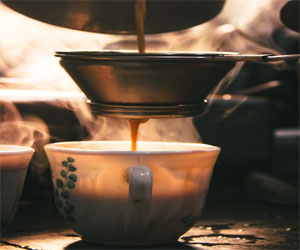 Materials:
Materials:
Wax (multiple colors for layering)
Wick
Fragrance oils (various scents)
Candle dye (multiple colors)
Heat-resistant container
Double boiler or microwave-safe bowl
Steps:
Prepare the container and wick as in the basic container candle recipe.
Melt each color of wax separately, adding specific fragrances and dyes.
Pour the first layer of wax into the container, allowing it to cool and solidify.
Repeat this process with different colors and scents, creating layered bands of wax.
Let the candle cool completely, trim the wick, and enjoy the fragrance and beautiful layers.
3. Upcycled Teacup Candle Recipe:
Materials:
Old teacup or small container
Wax
Wick
Fragrance oil (optional)
Candle dye (optional)
Double boiler or microwave-safe bowl
Steps:
Crafting Beauty And Functionality
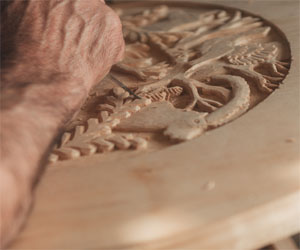 From Functional To Decorative: Creating with wood spans a broad spectrum, from crafting functional items such as furniture, cabinetry, and household objects, to carving intricate sculptures and decorative art pieces. This diversity allows artists to express their creativity across a wide range of styles and purposes.
From Functional To Decorative: Creating with wood spans a broad spectrum, from crafting functional items such as furniture, cabinetry, and household objects, to carving intricate sculptures and decorative art pieces. This diversity allows artists to express their creativity across a wide range of styles and purposes.
Traditional Techniques And Modern Innovations: The art of creating with wood combines traditional techniques handed down through generations with contemporary innovations. Woodworkers may employ age-old joinery methods like dovetails and mortise and tenon, while also using modern power tools for efficiency. This harmonious blend of old and new techniques gives rise to a rich tapestry of creations.
The Joy Of Craftsmanship: Woodworking, in particular, is a craft that places great emphasis on craftsmanship. It demands precision, attention to detail, and an unwavering commitment to quality. Whether it's shaping a piece of wood with hand tools or operating sophisticated machinery, the satisfaction of creating something with one's own hands is immeasurable.
Functional Beauty: One of the most remarkable aspects of creating with wood is the fusion of beauty and functionality. Woodworking, for instance, produces items that serve practical purposes while also being aesthetically pleasing. Chairs are designed for comfort, tables for stability, and cabinets for storage, but each is also a piece of art that enhances living spaces.
Sculpting Emotions: Artistic creations with wood go beyond the functional. Wood carvers, for instance, transform raw timber into intricate sculptures that convey a wide range of emotions. From serene and serene figures to dynamic, abstract forms, wood allows artists to sculpt their feelings and experiences into tangible art.
Sustainable And Earth-Friendly: Working with wood is often synonymous with sustainability. Responsible sourcing of timber, coupled with the durability and recyclability of wooden items, makes it an eco-friendly choice. Artists and craftspeople who create with wood are increasingly adopting environmentally conscious practices, further enhancing the medium's appeal.
Strategies For Success
 Stress: Constantly trying to meet tight deadlines and fulfill numerous commitments can lead to elevated stress levels. This stress can, in turn, affect your overall health, including your sleep, immune system, and emotional well-being.
Stress: Constantly trying to meet tight deadlines and fulfill numerous commitments can lead to elevated stress levels. This stress can, in turn, affect your overall health, including your sleep, immune system, and emotional well-being.
Burnout: A demanding schedule, when not managed properly, can lead to burnout - a state of physical, emotional, and mental exhaustion. Burnout can negatively impact your performance, creativity, and enthusiasm for life.
Health Issues: Neglecting self-care, such as exercise, proper nutrition, and relaxation, can result in various health problems, including weight gain, cardiovascular issues, and mental health challenges.
Strategies For Navigating Demanding Schedules
To tackle the challenges of demanding schedules and maintain a healthy work-life balance, consider implementing the following strategies:
Prioritize Tasks: Start by identifying your most important tasks and responsibilities. Focus on these first and allocate your time accordingly. Use to-do lists or time management apps to help you stay organized.
Set Boundaries: Learn to say no when necessary. It's crucial to establish boundaries that protect your personal time and prevent over-commitment.
A Tranquil Journey To Inner Peace
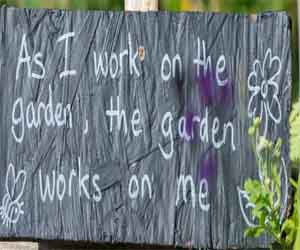 The Essence Of Herb Garden Meditation
The Essence Of Herb Garden Meditation
Meditation is a practice that has been revered for centuries for its ability to calm the mind, reduce anxiety, and promote emotional balance. When combined with the natural beauty and fragrance of an herb garden, meditation takes on a whole new dimension. Herb garden meditation involves spending time amidst your herbal haven, embracing the serenity, and harnessing the therapeutic benefits of herbs.
Preparing Your Herb Garden
Before embarking on a journey of herb garden meditation, it's essential to create an inviting space. Your herb garden should be well-maintained, with vibrant herbs and a comfortable spot for sitting or lying down. A soft blanket, a cushion, or a garden bench can be an ideal choice to enhance your comfort. Ensure that your chosen spot is free from distractions and noise, so you can fully immerse yourself in the meditation experience.
The Meditation Process
Begin your herb garden meditation by finding a comfortable seated or lying position. Close your eyes and take a few deep, calming breaths. Feel the earth beneath you and the gentle rustle of the herb leaves. Let your senses absorb the natural aromas, the warmth of the sun, and the soft caress of the breeze.
As you breathe in, focus on the scents around you. The invigorating aroma of basil, the calming fragrance of lavender, or the zesty scent of mint can all inspire different aspects of your meditation. You can choose herbs based on their individual healing properties or simply let your intuition guide you.
Creating Art From Earth
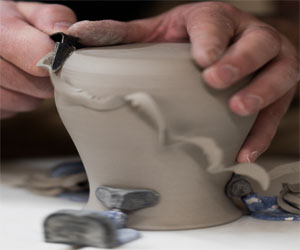 2. Stress Relief: Working with clay has a therapeutic effect. The tactile experience of manipulating the cool, moist material, combined with the meditative process of shaping, pinching, and molding, can help alleviate stress and promote mindfulness. As you immerse yourself in the creative process, daily concerns tend to fade away.
2. Stress Relief: Working with clay has a therapeutic effect. The tactile experience of manipulating the cool, moist material, combined with the meditative process of shaping, pinching, and molding, can help alleviate stress and promote mindfulness. As you immerse yourself in the creative process, daily concerns tend to fade away.
3. Sense Of Accomplishment: Completing a pottery project can be immensely rewarding. The tangible nature of the craft allows hobbyists to see the fruits of their labor take shape before their eyes. Whether it's the first pinch pot or a finely glazed vase, the sense of accomplishment is empowering and boosts self-esteem.
4. Functional And Decorative Items: Pottery offers a practical aspect as well. Hobbyists can create personalized, one-of-a-kind items for everyday use, such as plates, bowls, and utensils. These functional pieces can add a special touch to your home while showcasing your craftsmanship. Alternatively, pottery can be used to craft decorative items, making your living space uniquely beautiful.
5. Continuous Learning: Pottery is a hobby that offers endless opportunities for learning and growth. From mastering basic techniques like coiling, slab-building, and wheel-throwing to experimenting with glazes, there's always something new to discover. Experienced potters can push their boundaries by exploring advanced methods and complex forms.
6. Community And Connection: Pottery is often a social activity, and many enthusiasts find their way to local pottery studios or community centers to practice their craft. This opens the door to a community of fellow potters who share their passion. It's a great way to meet like-minded individuals and build connections through a shared hobby.